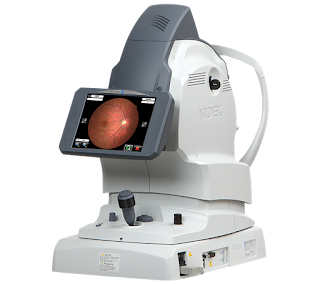Color Fixation Sticks – A Great Vision Screening Tool for Ocular Motility Testing
There
are many things that affect our ability to see color. In some cases, it doesn’t
matter if the red you see is the same shade another sees. A barn is barn,
right? But for those who work in an industry where color evaluation is part of
the job, it’s important. Let’s start with a bit of anatomy to help you
understand how color fixation sticks can actually make a difference in testing
ocular motility.
Looking Inside an Eye
The
process of seeing color is quite amazing in human eye. When light enters
through the eye’s cornea, the lens puts the object into focus and creates an
inverted image at the back of the eye on the retina. Rods can’t distinguish
colors. Their job is to detect changes in light and adapt the eye to help us
see, even when it’s dark. Cones allow us see color. There are three kinds, each
responsible for seeing red, green or blue, respectively. RGB – the three primary
colors that combine to create the multitude of color beauty we see in our
world.
Rod
and cone cells are sprinkled all over the retina, so most of our eye is able to
see color and navigate through changing light conditions. However, there’s a
small dimple in the back, called the fovea, which only contains cones. The
fovea is our specialized area for color vision. Once the eye has done its job
to capture light and color data, it sends everything along the optic nerve to
the brain for analysis. Within a split second, the brain reports what we are
seeing. Remarkable, right! Of course, there’s a lot that can go wrong.
 |
| Color Fixation Sticks |
What Environmental Impacts Are on
Color Judgment?
We
must understand the influence of light on color perception, be aware that our
eyes can be tricked, and we must utilize the workarounds created for us by
color science engineers.
·
A tired eye can’t make good color
judgments, especially after being over-stimulated by a strong color. Rest your
eyes before viewing, view quickly, and rest again before the next evaluation.
·
Always be aware of your environment.
Surrounding colors can make a color look different. When judging color, use a
light booth to ensure that nothing is clouding your view.
·
Recognize the type of light that is
illuminating your color. A light booth can help you control the lighting
conditions and ensure consistency.
·
Use a color measurement instrument to
capture color data. A colorimeter or spectrophotometer simply measures the
reflected light from the target sample area. It doesn’t even know surrounding
colors exist.
Thus,
the color fixation sticks got introduced to the eye care industry. Color
fixation sticks are another time-saving visual testing tool ideally used for
ocular motility and confrontation visual fields. The entire color fixation
sticks include five colors (White, Red, Blue, Green, and Yellow) and a handy
pocket leather case to carry safely wherever you go.
Originally
manufactured by Gulden Ophthalmic and sold by Foresight International Group, these
set of five color fixation sticks were designed with par excellence and
exported near customers via a safe passage of shipping network. At Foresight
International, we stock a great number of ophthalmic equipment ready to meet
every need of patient care. Get in touch quickly and know more about our
greatly helping vision screening tool – Color Fixation Sticks – more at
Foresight International! Contact right away!



Comments
Post a Comment